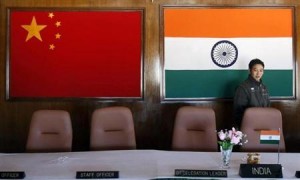
Despite this, India will likely remain a lower-income country well into the century, lagging behind China and its BRICS counterparts unless it can throw off the shackles of outdated development strategies and a culture of bureaucratic inertia — satisfied with benchmarking itself to standards that don’t measure up internationally.
India has the world’s largest concentration of poor people, with more than 840 million living on less than US$2 a day and 400 million on less than US$1.25 a day. By 2050, with the world’s largest population, India will face multiple challenges around urbanisation, infrastructure, jobs, drinking water, and food for its citizens. Ironically, as its size and rising middle-class power lead many to highlight its role in powering the Asian century, unless its poor can be embraced in the process of growth, China-style, India’s escape from the middle-income trap will remain a dream.
Located in the right place and at the right time, how can India thrive, alongside its giant Asian neighbour? What opportunities does China offer India and what opportunities will the rise of India offer China? India is bound to a low per capita growth trajectory unless it can lift its annual growth rate by at least 2 to 3 percentage points. Is China a threat to India’s regaining its growth momentum, or does it offer a way out of continuing economic fragility?
These are the questions that will be at the back of the minds of Prime Minister Modi and his advisers as they welcome President Xi this week.
Although it would be rash to declare that there is any clear national consensus on the answers to these big questions about India’s future and its relationship with China, Modi’s instinct and his temperament will bring a measure of sureness to answering them that may well be the first steps in defining it.
Modi’s vision is of an India that can look out and compete in the world, finding its way with China and all the world’s major economies. It is of an India that will welcome more and more Chinese investment (together with that from Japan, South Korea and other international investors), taking up opportunities in manufacturing and services where China, for example, can longer compete or never could. And that is the India with which China’s engagement is growing deeper day-by-day and with which its leadership is looking to do business. It is not the defensive, protectionist, bureaucratic India that still too often carries the day, as it recently did when it inexplicably scrapped the WTO deal on trade facilitation.
As Sen explains in his piece on the visit this week, for Xi and Modi to redefine the bilateral relationship in this way, ‘the existing policymaking structures and thinking have to be discarded’. This is a big ask but it is one that, one senses, the Indian people were seeking when they swept Modi to power, as they sought new leadership and a transformation in national thinking.
What will drive these changes and India’s deeper integration into Asia with China, of course, is the inexorable force of India’s and China’s demographic dynamics and growing market size. It will do this by leveraging the two countries’ divergent demographics and their trade and geographic and cultural proximity. Failure to understand the force and potential of the growing weight in the India–China partnership continues to wrong-foot analysis in Washington and Canberra (and other places). The pace and scale of bilateral trade and investment growth between China and India is bound to match that of India’s other Asian partnerships.
But what of the baggage of history in the relationship, it might well be asked?
Sourabh Gupta in this week’s lead examines how Modi and Xi might pirouette around resolution of the border issues that have irritated relations for years. With India having signed on in principle to a package deal after four decades of hesitation, Gupta says, ‘the onus is broadly on China to guide the negotiations towards a successful, status quo-based closure. President Xi will likely want to fully size-up the strategic orientation of the new government in Delhi before committing China to a permanent resolution of the dispute. By admitting that the business transacted (by the British) at Simla a century ago was not as sacrosanct as many Indians have been led to believe, Modi can signal that India stands willing — and politically able — to fashion a creative boundary package that is shorn of the baggage of its colonial past’.
There are other important initiatives underway which might later be recognised as the beginning of a new regional cooperation dynamic. President Xi will confirm his invitation to Prime Minister Modi to attend the APEC Summit in Beijing in November (although India is not yet a member of APEC) and for India to participate in the Asian Infrastructure Investment Bank which China is currently in the process of launching.
Peter Drysdale is Editor of the East Asia Forum.
link: http://www.eastasiaforum.org/2014/09/15/china-and-indias-growing-strategic-weight/







